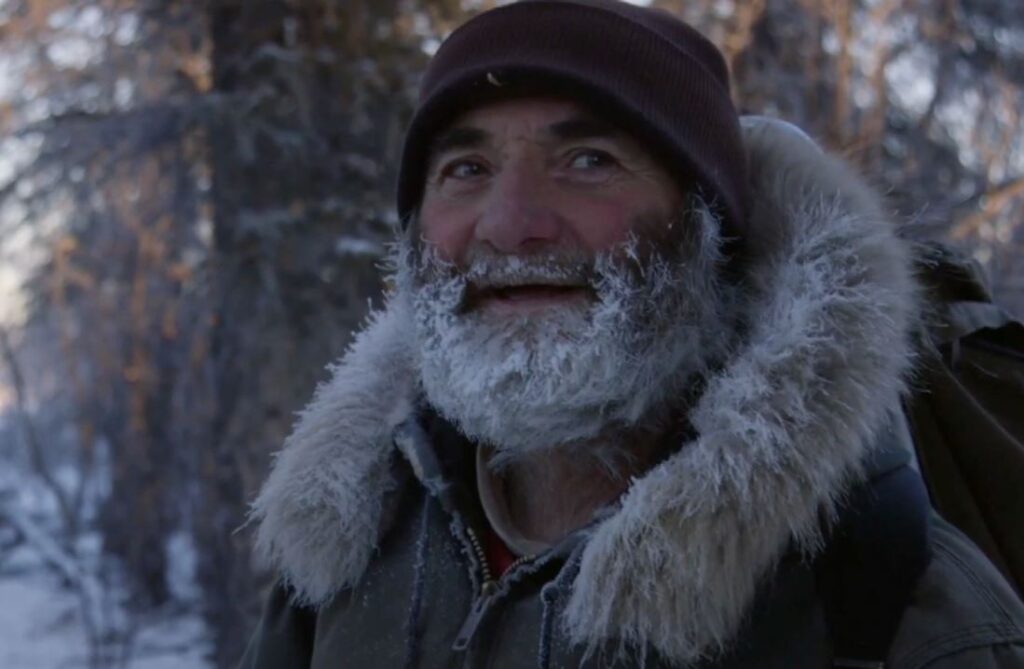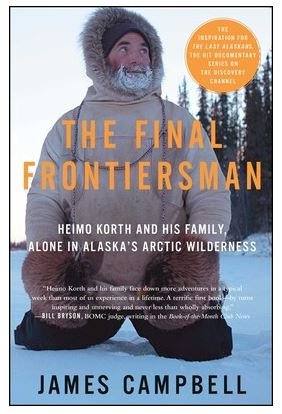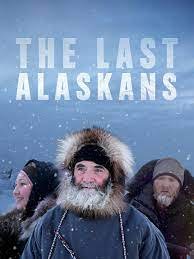As one of the last few survivors living in the harsh, remote wilderness of northern Alaska, Heimo Korth stands tall. Now nearing 70 years of age, Heimo has lived in this land for nearly half a century. He and his wife Edna raised three daughters in the bush, surviving solely on what food they could hunt, fish and gather. They lived in small log cabins built from the surrounding forest, used furs caught from their trap lines and moose and caribou skins to keep warm, and pieced together small amounts of income required to buy the few necessities nature couldn’t provide. After being featured in the TV show “The Last Alaskans”, Heimo has become a bit of a star, and a lot of folks want to know more about him and his lifestyle.

Where is Heimo from and what brought him to Alaska?
Heimo Korth was born in Appleton, Wisconsin in 1955. Although he was raised in the suburbs, facing a future of a steady factory job like his father before him, Heimo fell in love with the outdoors at an early age and dreamed of going north and living in the wilderness. As a teenager he worked up the courage to follow his dream and head north. He went to Canada’s Northwest Territories for a while, but ended up back home in Wisconsin before long. Then he found opportunity in Alaska, working as a packer for a big game guide in the Brooks Range. At age 20, Heimo went into the wilderness and never came back.
How did Heimo start trapping?
After working for hunting guide Keith Koontz for a season, Keith hooked Heimo up with a friend who had a trapline on Beaver Creek, a tributary to the Yukon River in the vicinity of Fort Yukon in Alaska’s interior. He got a grub stake together (food, traps and supplies) and had a bush pilot fly him in to the cabin in the fall. Heimo spent three months there alone, living off meager food supplies and trying to learn to trap. It was tough. He nearly starved to death, and lost most of his gear after falling through the river ice. If it weren’t for his bush pilot friend checking up on him, it very well could have ended that way. He got a trip back to town to regroup, but the wilderness had made a big impression on him. Heimo knew this was the type of place he wanted to live.
Heimo spent the rest of that first winter on St. Lawrence Island, in a remote Eskimo village 90 miles from Siberia (coincidentally, this is where Heimo met his future wife Edna). He helped Koontz run the village store and learned to hunt from the village’s best hunter. By the following spring, Heimo returned to Beaver Creek, a tributary to the Yukon in the White Mountains north of Fairbanks, where he stayed at a friend’s cabin and took care of their dogs for the summer.
The next two winters, Heimo trapped in the rugged mountains of the Brooks Range in the Chandalar River drainage. It was hard, extreme living and the type of place many Alaskans call ‘hungry country’, with extremely low animal densities. Trapping was hard with furbearers so scarce, and Heimo battled deep snow, extreme cold and the challenges of living in the arctic with minimal shelter. Although he didn’t have much to show for it on the outside, those two winters really shaped Heimo as a mountain man and proved beyond a doubt his ability and desire to live in the bush.
Heimo’s Home – ANWR
After a long search for a place in the bush, Heimo ended up on the Coleen River, a tributary of the Porcupine River north of Fort Yukon. At the time, he was looking for a place to trap that would produce enough fur to make the money he needed to keep living in the bush, but most of the fur-rich country around the Yukon Flats was already claimed by other trappers. The Coleen was far, far from town, about the most remote place in Alaska. Heimo’s friend Bob Harte was trapping on the lower Coleen and invited Heimo to trap above him. So Heimo headed up the Coleen, about 50 miles upriver from Bob, and began what would become the rest of his life, the place he would build cabins, raise a family, and live to this day.
For more than four decades Heimo has made his living trapping in the area around the Coleen River in interior Alaska, a place that is now known as the Arctic National Wildlife Refuge (ANWR). The Refuge is just shy of 20 million acres of wild country, with no roads or development. The area has been under federal ownership and protected since at least 1960, but officially became a Refuge in 1980. At that time, all new human occupation within the Refuge was banned. Only those who had been in the area prior to 1980 were allowed to remain. Heimo and just a small handful of others still have cabin permits to live there. A few of these families were featured in the Discovery TV series “The Last Alaskans”.
Family
Heimo met Edna in the St. Lawrence Island village of Savoonga, where he continued to return to hunt and spend time with the old hunters he’d befriended in his early days in Alaska. They met in 1975 and were married in 1982. Edna had two children from a previous relationship. Heimo adopted Edna’s daughter Millie, and Heimo and Edna had three children together, Coleen, Rhonda and Krin.
Tragedy
Heimo and Edna’s daughter Coleen tragically died in 1984 at two years of age. The family was traveling downriver by canoe to the home cabin to get food when they hit a sweeper (a down tree in the water) and overturned. Coleen drifted downriver and was never found again. It was a terrible tragedy that left a hole in Heimo and Edna that remains to this day.
Heimo’s Daughters Today
Heimo and Edna’s three other daughters – Millie, Rhonda and Krin, are still around today. I believe they are living in the Fairbanks area and all have families of their own. They do visit Heimo and Edna at their cabin in the bush from time to time. Heimo and Edna spend time in Fairbanks during the summer to be with their children and grandchildren, but return to the Coleen River trapline each fall and winter.
Trapping
Heimo still runs long trap lines to catch fur and make the bulk of his living. He traps primarily by snowmobile and often runs more than 200 miles of trapline in various circuits. Heimo traps for wolves, wolverine, fox and marten, as well as a few other species. He traps a few beavers, which provide valuable meat for food in addition to their fur pelts. Heimo has been known to catch large numbers of wolverine, and is regarded as one of the best wolverine trappers in all of North America. Edna traps as well, running short lines of marten traps on foot closer to the cabin. She hand sews many of the clothes she and Heimo wear, including his winter parka and large cold weather mitts.
In Books
In 2004, Heimo’s cousin James Campbell wrote the book that told Heimo’s life story, as well as that of many living in the Alaska bush, past and present. “The Final Frontiersman: Heimo Korth and His Family, Alone in Alaska’s Arctic Wilderness”. The book is incredibly well written and captivating. I’d recommend it to anyone interested in Heimo’s lifestyle.
In 2016, Campbell published a bit of a follow-up book, “Braving It”, where he returns to Heimo’s cabin with his daughter Aiden. It’s a great look into how Heimo and Edna’s lives have changed – or stayed the same – in the intervening years.
On TV
“The Last Alaskans” was a reality TV series that premiered on Animal Planet in 2015. The show later moved to the Discovery Channel and aired for a total of four seasons between the two networks. Heimo and Edna Korth were one of the main characters of the show, and were prominently shown living on their trap line from late summer through to spring. The show also included Bob Harte, Heimo’s neighbor 50 miles downriver, until his death, as well as Tyler and Ashley Selden, a young couple living and trapping on the edge of the Arctic National Wildlife Refuge, and Charlie Jagow, one of the few who grew up in the area.
“The Last Alaskans” was praised by fans and critics alike for its refreshing take on reality TV. Unlike most modern Alaska reality shows, which are heavily dramatized and sometimes outright fake, TLA provided an honest, reflective look at life in the remote Alaskan bush, the incredible beauty of the place, and the people who call it home.
In a flashback to the Korths’ early days, National Geographic produced a documentary titled “Braving Alaska” in 1993. The show followed four families as they lived life in the Alaska wilderness. It’s kind of cool to see a young Heimo and Edna, and their little kids running around. Also featured were the Haydens, who lived up on the Koness River in ANWR, north of the Korths. Susan Hayden, who was a teenager running her own dog team and trap line during the filming of Braving Alaska, appeared in several episodes of The Last Alaskans where she and her brother revisited their old home.
In 2009, Vice Media produced a documentary titled “Heimo’s Arctic Refuge”, or “Surviving Alone in Alaska” where they visited and filmed Heimo an Edna as they learned about their lifestyle and the place they call home. It’s a unique, unfiltered take that’s entertaining and fun to watch.
Net Worth
The Last Alaskans was a huge show, and made Heimo famous on a worldwide stage. Like most famous people, a lot of people want to know what Heimo’s net worth is. The answer is (although it’s not your business, haha), probably less than you think. As I understand it, the show paid them pretty decently for being on, but there aren’t a whole lot of royalties or other spinoff income from “The Last Alaskans” or any of the other stuff. Living in the bush is expensive, particularly the cost of getting to and from town, and supplies cost a lot out there too. One of the big benefits of the show is that there were lots of flights going back and forth to transport camera people and equipment, and that provided a good opportunity to transport supplies to their remote cabins at little to no cost. Also, any snowmobiles, boats, motors, etc that were purchased for the show were probably left there and ownership transferred to the ‘actors’ after filming ended. So basically, all the fame and fortune made it more feasible for Heimo and his family to live their wilderness lifestyle amid the low fur prices that have been prevalent in recent years. They are rich in experience and the free life they get to live.
Future
Although old age and distance from children and grandkids makes it harder for the couple to stay in the bush year round, Heimo and Edna still return to the Coleen each season and spend the winter there. That is their home and it is too much a part of them to leave. Heimo is in pretty good shape for his age, lives a very active lifestyle, and says that he wants to live out there until he dies, if he can be so lucky. That certainly seems like a worthy goal to me!


A great article. Very interesting.
Wished we had an address to send the Christmas cards, wishes, etc.
That would be awesome to have Heimo and Edna’s address. We miss the show!
I named my ’47 Chevy pickup truck Edna 🙂
Great article. We see the Korths almost every summer in Fort Yukon, usually loading or unloading a boat full of gear.
I have been watching from the beginning now I’m watching reruns can’t get enough amazed what a legacy and how sad I doubt that the children will come back as he says it will all with her and go. I’m very happy that I get to watch reruns at least it’s like getting to know everyone there, I’m glad I was curious enough to look on the web to learn more. I guess I’ll have to go and find the book to see about Edna other children and whatever else the book may have that we didn’t learn on the show thank you for this opportunity, Edna Ford
Absolutely the greatest show ever. Everyone on that show touched my soul. The camera crew did an incredible job. I as well as many others felt a connection with these families and an appreciation of how they live. Thank you for that.
great life they are my hero saw all the shows on tv